Blog
nushell – A Shell Using Structured Data 2024-11-06
For years, I've used bash and sh rather interchangeably, but recently I've been using nushell as my default shell. In this post, I'll discuss some of the reasons why nushell is slowly changing how I think about the shell and the role it plays in scripting and data processing.
What is a shell?
Shells provide a REPL-like command-line interface, enabling users to interact with the operating system. Users type in commands, and the shell interprets these commands and executes them. Not so long ago, before modern graphical user interfaces, shells were the primary means of interacting with a computer and literally formed the outer "shell" of the operating system.
More specifically, the shell allows users to:
... Yeah, that's basically it. In a nutshell2, shells are just programs to help users execute processes and manage the data flowing between them.
The Role of a Shell
In my opinion, the goal of a shell should be to stay out of the way and let users do their work as efficiently as possible. Elaborating on this concept a bit, I think that a shell should do a few things:
- Make executing processes and scripts easy – This seems relatively trivial
because all you have to do is type the name of the command or script you want
to execute. Many
core commands are
intentionally only a few letters, so they can be typed quickly (i.e.
ls,cp, andcat), and auto-complete functionality helps users type common command-line options. - Make reading and writing scripts easy and fun – I'd argue that this one is perhaps more difficult because the scripting language must be carefully designed to be concise and easy to write but also comprehensible and expressive.
Let's see how nushell has taken a different approach to scripting and stream
processing.
Pipelines with Structured Data
The primary feature of nushell that sets it apart from bash is that data in
nushell is structured; whereas, pipelines in bash are solely a stream of
bytes. Quoting the nushell website:
Nu pipelines use structured data so you can safely select, filter, and sort the same way every time. Stop parsing strings and start solving problems.
Using "structured data everywhere" is a powerful concept, and it's refreshing to see it applied to a shell. Surely, human-readable strings have an important role to play, but I'd strongly argue that data should remain structured for as long as possible, ideally until the very moment they are displayed to a user.
To make this ecosystem work, nu has re-implemented many core commands (i.e. ls
and ps) to return structured data and provides an
extensive list of new commands. Here's an
example of the
redesigned ls command piping
structured data to where
and sort-by commands:
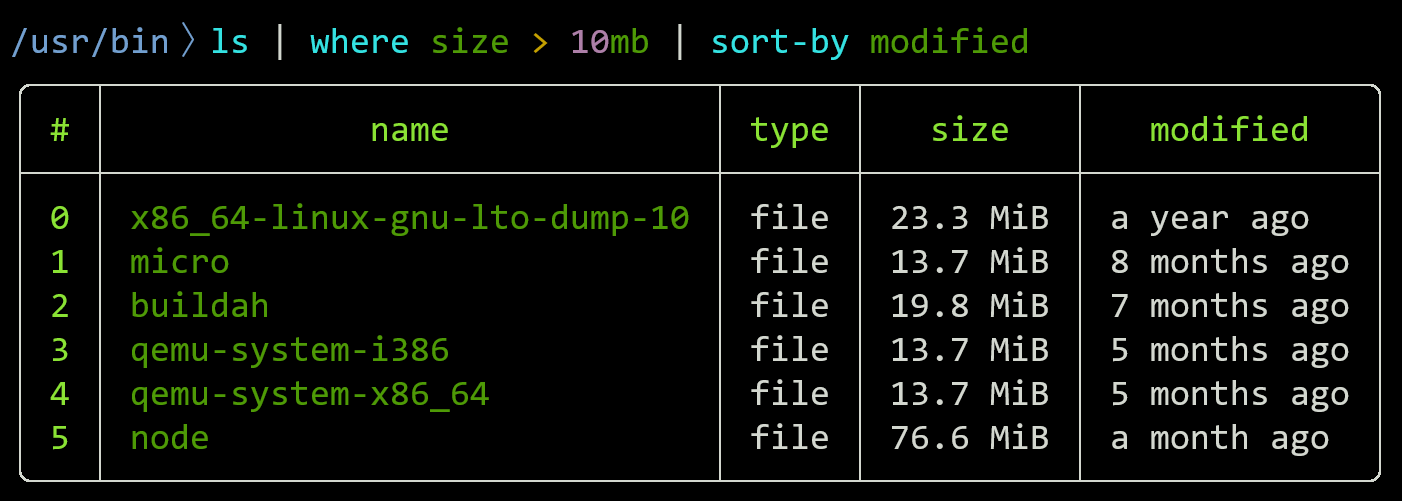
This is pretty neat for browsing the file system, but Nu is really trying to be
a data processing agent. It can parse JSON, for example. I cannot even express
how amazingly useful this one feature is! Nu completely
replaces jq.

There is also a
built-in http command for
sending HTTP requests, and it automatically parses HTTP response bodies. Quoting
the nushell website again:
Nu speaks JSON, YAML, SQLite, Excel, and more out of the box. It's easy to bring data into a Nu pipeline whether it's in a file, a database, or a web API:

How about looking at the HTTP headers:
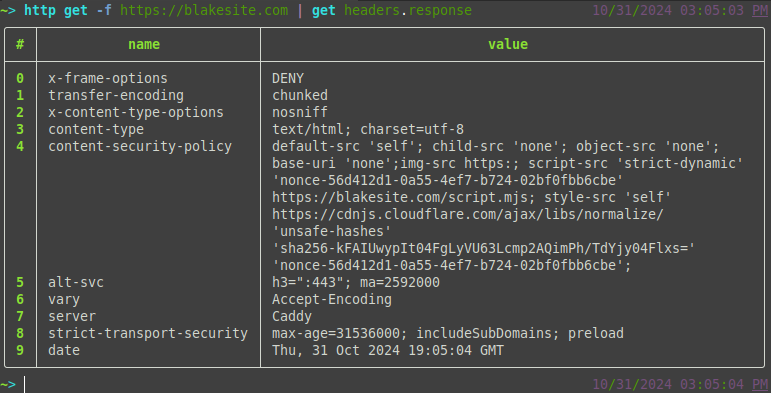
Here's a final example of nushell piping some Markdown to Typora:

The to md command will convert the structured data into Markdown and then pipe
the byte stream to Typora:
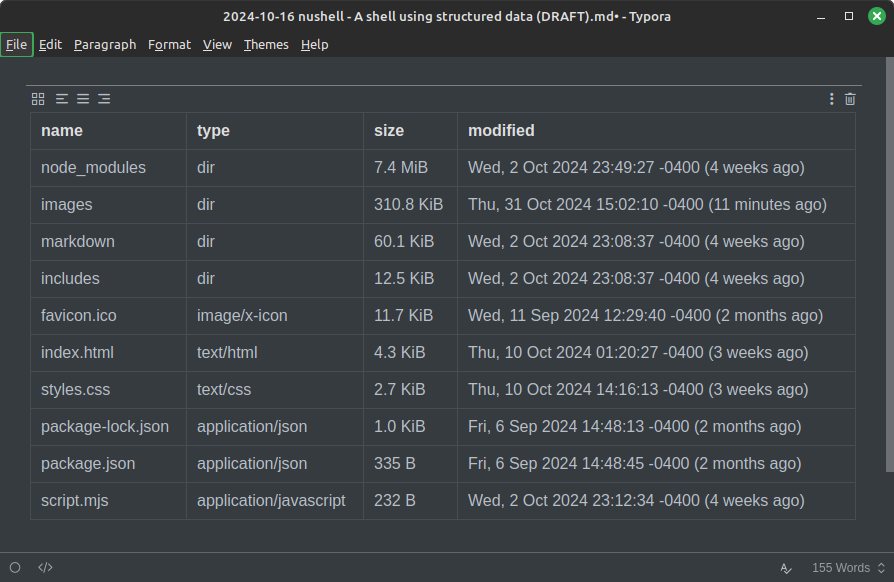
As you can see from these few examples, Nushell is selling itself as a
general-purpose data processing ecosystem while also acting as your
general-purpose shell. Even the
help commands return
structured data:
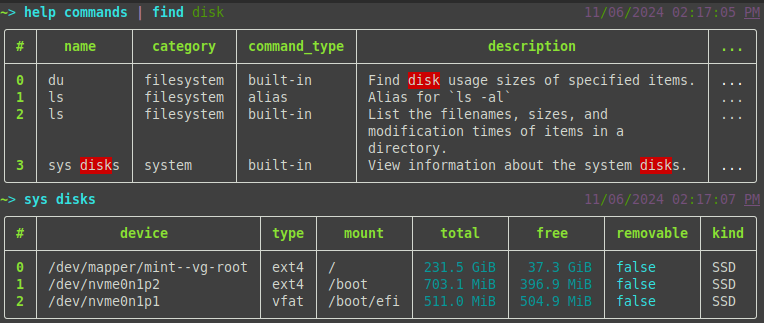
Extending Nushell
One of the first things I wanted to try in nushell was a replacement for
grep --recursive, but such a command was not implemented yet. Naturally, I set
out to
implement this for myself:
# Search terms in the specified files and/or folders based on the glob pattern provided.
def "find in" [
glob: glob, # the glob expression
...rest: any # terms to search
]: nothing -> table<path: string, line: int, data: string> {
glob --no-dir $glob
| par-each {|e|
open $e | lines | enumerate | rename line data |
find --columns [data] ...$rest |
each {|match| {path: ($e | path relative-to $env.PWD), ...$match}}
} | flatten
}
If you type the above into nushell, it will create a new "find in" command. This
command can then be found by typing help commands , and you can also read more
about the command by issuing the --help command-line option. Here's a
screenshot with all of that in action:
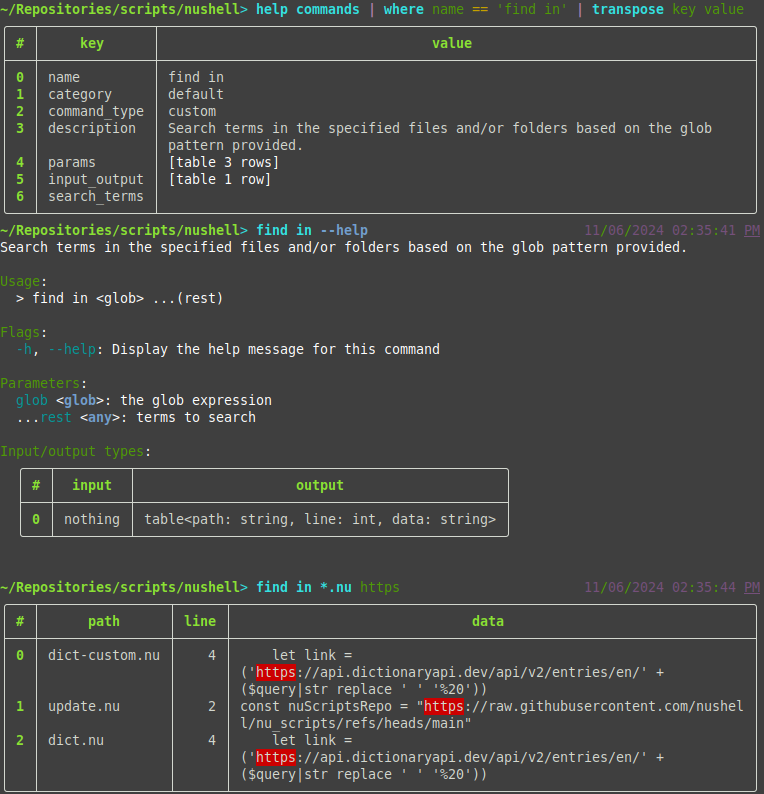
Nushell also supports compliled plugins to extend Nu's functionality, as well.
Clipboard Integration
Since Nushell is so good at parsing data, I have found it incredibly useful to
connect it to the clipboard. First, you will need a process to copy/paste
to/from the clipboard from the command line. For Linux Mint, that process is
xclip, but there are
various options depending on your operating system.
I can simply create aliases to xclip in Nushell like so:
alias clipc = xclip -selection clipboard
alias clipv = xclip -selection clipboard -o
Then, I can copy some JSON into the clipboard and run beautiful pipelines like this:
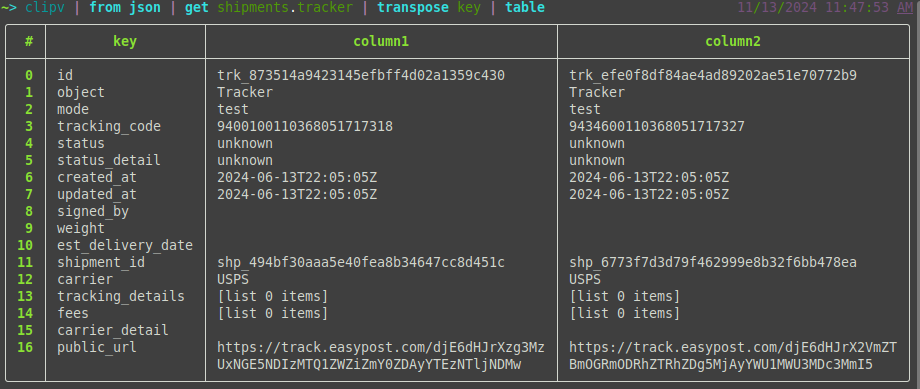
Conclusion
Nushell is a continuation of a paradigm shift for shells and scripting
languages. It promises better data processing capabilities while maintaining the
bread and butter of a shell, which is executing external processes. Admittedly,
more work on Nu is needed to fully replace bash such as
support for background tasks;
nevertheless, I will continue to use Nu as my default shell for the foreseeable
future.
Resouces
- https://github.com/nushell/nushell/releases – Pre-built binaries for your system are probably here.
- https://www.nushell.sh/book/getting_started.html
- https://www.nushell.sh/book/
- https://www.nushell.sh/commands/
Blog Post Index
- 2025-09-18 Why C is Actually a Terrible Language
- 2025-01-26 Just Use Web Technologies for Your Next Killer App
- 2024-12-14 Typora – A Brief Review of the Best Markdown Editor
- 2024-11-06 nushell – A Shell Using Structured Data
- 2024-10-07 Building a Markdown Blog with Caddy
- 2024-10-06 Surround Sound on a Raspberry Pi 3
- 2024-10-03 Building a Markdown Website with Caddy
- 2024-09-25 My Git Configuration
- 2024-09-11 Why Databases
- 2024-09-06 New Website
-
Frankly,
bashdoesn't really allow users to browse the file system. That job is forlsand friends,which are separate processes. ↩︎ -
pun intended. I'm not sorry. ↩︎